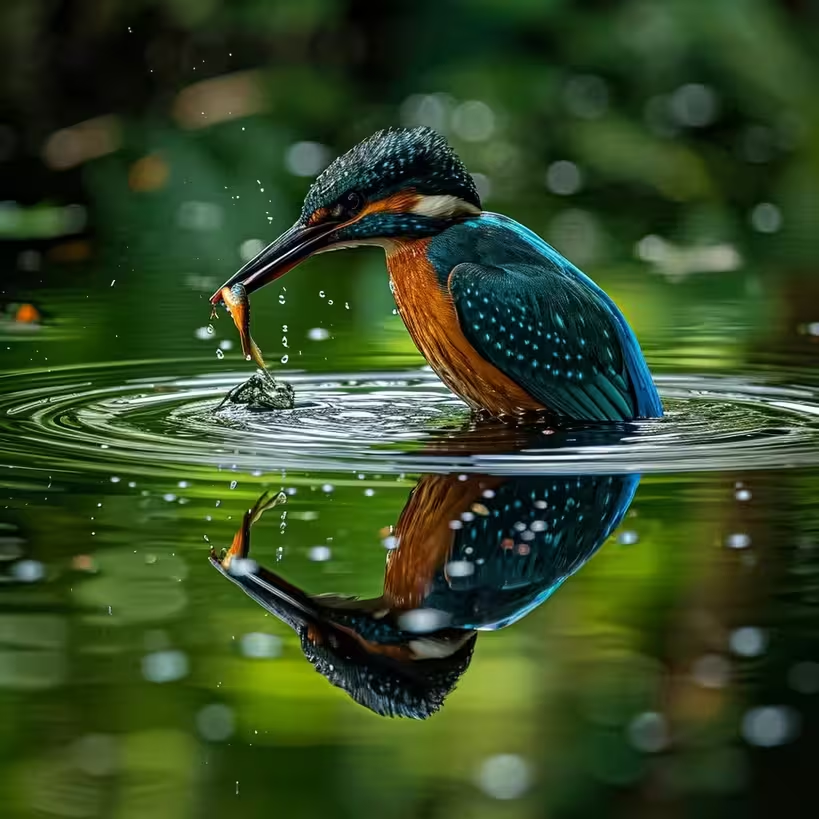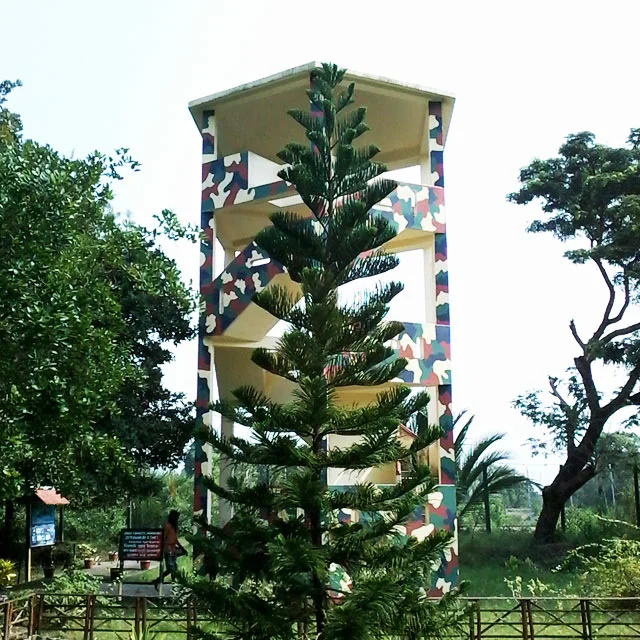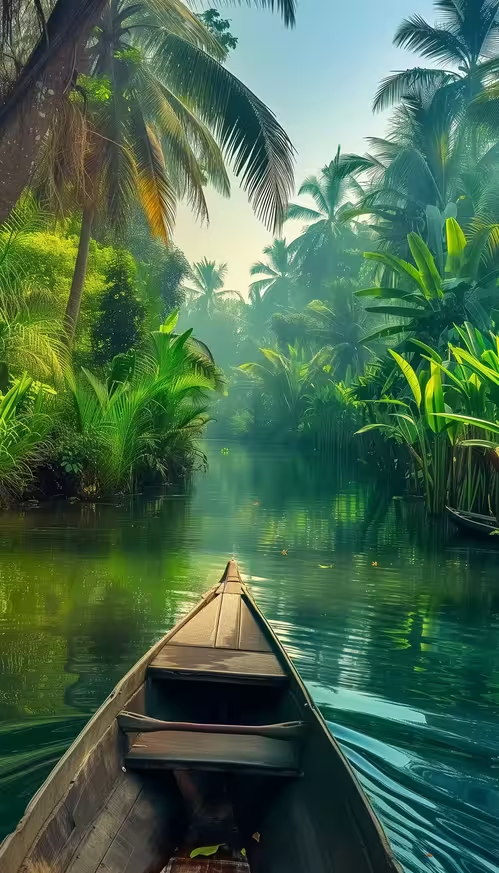Introduction
Where is Sundarban National Park? : Sundarban National Park, a UNESCO World Heritage Site, is one of the world’s most unique and awe-inspiring natural wonders. It is a vast stretch of mangrove forests and intricate waterways, located in the delta region of the Bay of Bengal. Known for its rich biodiversity, and unique ecosystem, and as the home of the majestic Royal Bengal Tiger, Sundarban National Park is an ecological paradise that attracts nature lovers, wildlife enthusiasts, and adventure seekers from around the globe. We can check more about “Where is Sundarban National Park?”

The park’s remote and complex geography, intertwined with rivers and dense mangroves, makes it a challenging yet thrilling destination to explore. But where exactly is Sundarban National Park located? Understanding its geographical setting not only highlights its natural beauty but also emphasizes its significance as a vital ecological region that sustains both wildlife and local communities.
Sundarban Leisure Tourism offers a unique opportunity to experience the park’s wonders firsthand, providing guided tours that reveal the secrets of this mesmerizing mangrove ecosystem. By visiting Sundarban Leisure Tourism, travelers can enjoy a safe, informative, and eco-friendly journey into the heart of this extraordinary landscape. We are powered by Argusdna [Webs Designing Company ] also we have our brother company Royal Sundarban Tourism.
Location of Sundarban National Park
Sundarban National Park is situated in the southeastern part of India and extends into Bangladesh, forming the largest tidal halophytic mangrove forest in the world. The park is part of the larger Sundarbans delta, which is shared between India and Bangladesh, covering approximately 10,000 square kilometers. The Indian side, where Sundarban National Park is located, comprises about 4,263 square kilometers of this total area.
Geographical Coordinates:
- Latitude: 21.9497° N
- Longitude: 88.7794° E
Administrative Divisions
Sundarban National Park is located in the state of West Bengal, India, within the South 24 Parganas district. The park lies at the southernmost tip of the Indian subcontinent, bordered by the Hooghly River to the west, the Ichamati-Kalindi-Raimangal Rivers to the east, and the Bay of Bengal to the south.

The park is part of the larger Sundarbans Biosphere Reserve, which includes the Sundarban Tiger Reserve, Sajnekhali Wildlife Sanctuary, and other protected areas. This vast protected region is managed to preserve its unique biodiversity, promote scientific research, and support the sustainable livelihoods of local communities.
How to Reach Sundarban National Park
Reaching Sundarban National Park requires some planning, as it is a remote and largely inaccessible area. However, the journey is part of the adventure, and various transportation options are available for travelers looking to explore this extraordinary region.
- By Air: The nearest airport to Sundarban National Park is Netaji Subhas Chandra Bose International Airport in Kolkata, West Bengal, which is approximately 100 kilometers from the park. From the airport, travelers can hire a taxi or take a bus to reach the starting points for Sundarbans tours, such as Godkhali, Canning, or Namkhana.
- By Train: The closest railway station to Sundarban is Canning, about 48 kilometers from Godkhali, one of the main gateways to the park. Trains run frequently from Sealdah Station in Kolkata to Canning. From Canning, visitors can take a taxi or local transport to Godkhali, from where boats are available to enter the Sundarbans.
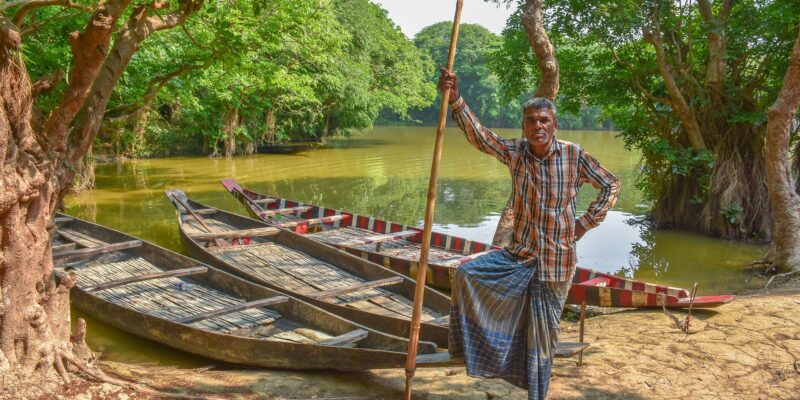
- By Road: Sundarban can be reached by road from Kolkata, with several routes leading to entry points like Godkhali, Namkhana, Raidighi, and Sonakhali. Private taxis, buses, and hired vehicles can be used for the journey. The roads are well-connected, but the final leg of the trip will involve crossing rivers and creeks by boat.
- By Water: The most popular way to explore Sundarban National Park is by water. Boats and launches are the primary modes of transport within the park, and tours often start from key entry points such as Godkhali. Visitors can enjoy the scenic boat rides through the mangrove creeks, spotting wildlife and experiencing the serene beauty of the mangroves.
Exploring Sundarban National Park with Sundarban Leisure Tourism
Sundarban Leisure Tourism offers a range of guided tours that provide a comprehensive experience of Sundarban National Park. From thrilling wildlife safaris to serene boat rides, the tours are designed to immerse visitors in the natural wonders of the park while ensuring safety, comfort, and a deep understanding of the ecosystem.
Key Highlights of the Tours:
- Mangrove Safaris: Navigate through the intricate network of waterways in the Sundarbans on a guided boat safari. Witness the diverse flora and fauna, including spotted deer, estuarine crocodiles, and various bird species that thrive in this unique habitat.
- Tiger Tracking: Experience the thrill of tracking the elusive Royal Bengal Tiger, the flagship species of Sundarban National Park. With expert guides and local trackers, visitors have the chance to spot these magnificent creatures in their natural habitat.
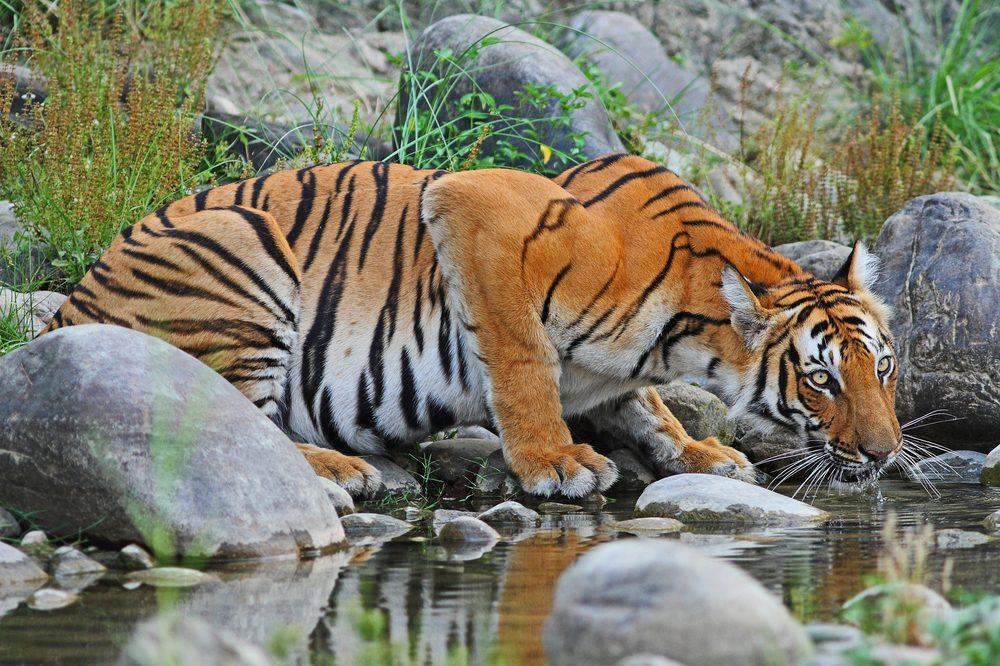
- Birdwatching: The Sundarbans is a paradise for birdwatchers, with over 250 species of birds, including the rare Masked Finfoot, Lesser Adjutant, and Mangrove Pitta. Sundarban Leisure Tourism provides specialized birdwatching tours for enthusiasts and photographers.
- Cultural Interaction: Engage with local communities and learn about their traditional ways of life, including fishing, honey collection, and the challenges they face living in harmony with the forest. Sundarban Leisure Tourism promotes responsible tourism that supports local livelihoods and fosters cultural exchange.
Contact Details:
- Website: Sundarban Leisure Tourism
- Call for Sundarban Booking: +91 8346839452 / +91 7548908911
- Address: Pakhirala Ferry Ghat Road Near Ariyan Hotel, Pakhirala, Gosaba, South 24 Pgs, West Bengal – 743370, India
- WhatsApp Link: Chat Now

Flora and Fauna of Sundarban National Park
Sundarban National Park is renowned for its incredible biodiversity, which includes an array of unique species adapted to the mangrove ecosystem. The park’s diverse habitats—ranging from dense mangroves and mudflats to freshwater rivers and saline estuaries—support a wide variety of flora and fauna.
- Flora: The Sundarbans are characterized by their dense mangrove forests, which include species such as Sundari (Heritiera fomes), Gewa (Excoecaria agallocha), and Goran (Ceriops decandra). These trees are specially adapted to the saline and tidal conditions of the region, with complex root systems that help stabilize the coastline and protect against erosion.
- Fauna:
- Royal Bengal Tiger: The most famous resident of Sundarban National Park, the Royal Bengal Tiger is a top predator that plays a crucial role in maintaining the balance of the ecosystem. Sundarban is the only mangrove forest in the world where tigers are found.
- Estuarine Crocodile: These formidable reptiles are commonly spotted basking on the riverbanks and are a key part of the Sundarban’s aquatic ecosystem.
- Gangetic Dolphin: The endangered freshwater Gangetic Dolphin can often be seen leaping through the rivers of Sundarban, adding to the park’s rich aquatic life.
- Birdlife: The park is a haven for birdwatchers, with species like the Brahminy Kite, Kingfishers, and various herons and egrets gracing its skies.
Importance of Sundarban National Park
- Biodiversity Hotspot: Sundarban National Park is a critical habitat for numerous species, many of which are endangered. Its designation as a protected area helps safeguard this unique biodiversity for future generations.
- Climate Regulation and Coastal Protection: The mangroves of Sundarban play a vital role in stabilizing the coastline, preventing soil erosion, and protecting inland areas from storm surges and cyclones. The forest also acts as a carbon sink, helping to mitigate the effects of climate change.
- Livelihood Support: The park supports the livelihoods of millions of people who live in and around the Sundarbans. Fishing, honey collection, and ecotourism are key economic activities that are closely linked to the health of the mangrove ecosystem.
- Cultural Significance: The Sundarbans is deeply embedded in the cultural fabric of the local communities. The forest is not just a source of livelihood but also a place of worship and folklore, with tales of Bonbibi, the forest goddess, and the man-eating tigers adding a mystical dimension to the landscape.
Conservation Challenges and Efforts
Despite its protected status, Sundarban National Park faces numerous challenges, including climate change, rising sea levels, and human-wildlife conflict. Conservation efforts focus on habitat restoration, anti-poaching measures, and community involvement to ensure the long-term survival of the park’s unique flora and fauna.
Sundarban Leisure Tourism plays a crucial role in supporting these conservation efforts through responsible tourism practices. By raising awareness, promoting sustainable livelihoods, and contributing to conservation initiatives, the tours help protect the Sundarbans natural heritage.
Conclusion
Sundarban National Park is more than just a tourist destination; it is a vital ecological region that showcases the intricate relationship between nature and human life. Its location at the confluence of the Ganges, Brahmaputra, and Meghna rivers creates a unique habitat that supports a rich tapestry of life, from the elusive Royal Bengal Tiger to the hardworking communities that call the mangroves home.
Exploring Sundarban National Park with Sundarban Leisure Tourism offers an unforgettable journey into the heart of this mangrove paradise. By visiting responsibly, travelers not only experience the stunning beauty of the Sundarbans but also contribute to its preservation for generations to come.

